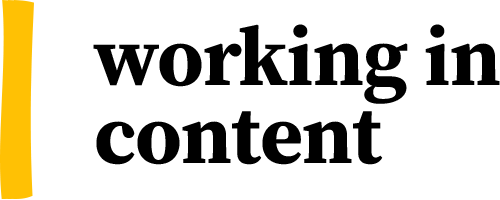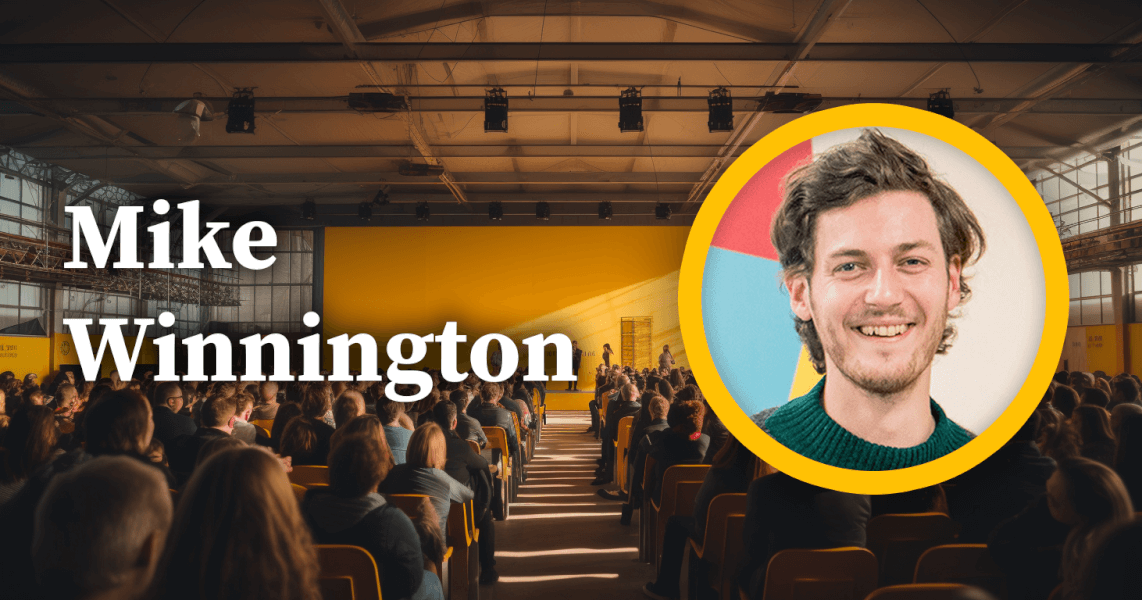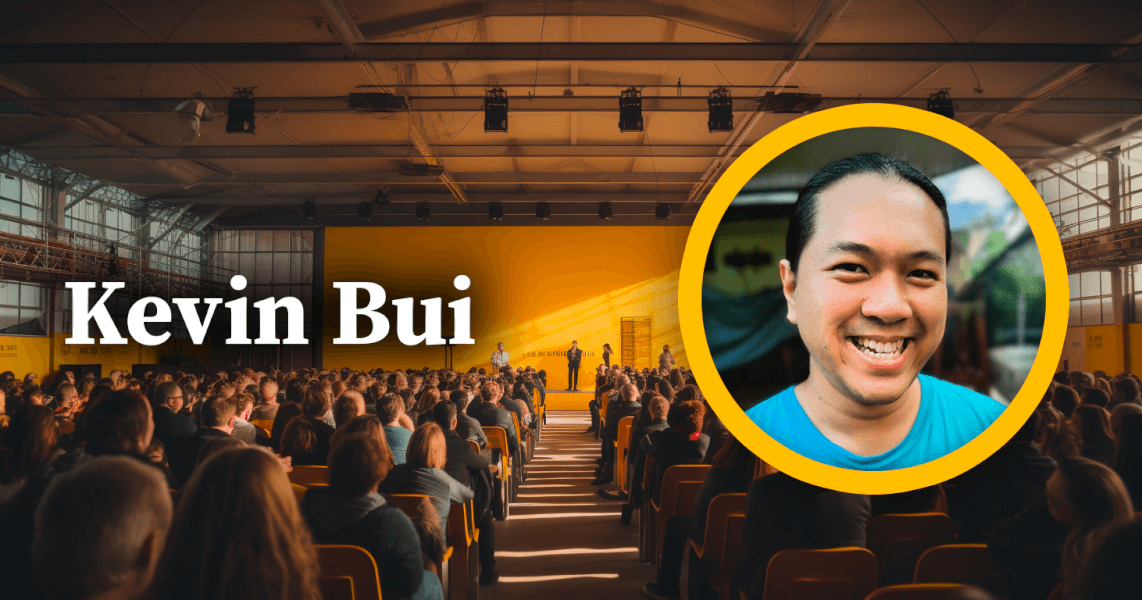In the fourteenth video of our Perspectives series, we feature Marissa Epstein, a Senior User Experience Strategist at Lullabot. Marissa shares her experience in establishing a unified Strategy department within the company, highlighting the challenges and solutions they encountered along the way. This presentation delves into the importance of collaboration, defining services, and mapping the client's journey to create consistent and intentional work as a team.
[Title correct at the time of recording]
Meet our speaker
Marissa Epstein, CPACC, is a Senior User Experience Strategist. In former lives, she was a student of psychology, a packaging designer, a visual web designer, and an art director. Today, Marissa solves complex UX and strategy problems alongside the Lullabot team, for clients including Mass.gov, Georgia.Gov, Harvard Library, and the Grammys. She brings her passion for users and her OCD-level organization skills to usability research, responsive UI design systems, discovery workshops, information architecture, accessibility, project management, and more. Marissa can be found in Providence, RI, often under her huge dog, or a book, or both.
[Title correct at the time of recording]

About this talk
In this insightful presentation, Marissa Epstein takes us through the journey of building a cohesive Strategy department at Lullabot. She highlights the challenges they faced, such as the lack of a shared understanding and consistent approach to their work, and the solutions they implemented to overcome these hurdles.
Throughout the talk, Marissa emphasizes the importance of collaboration and teamwork in creating a unified department. She shares practical strategies, such as conducting weekly exercises to work on key deliverables together, which not only helped the team develop a shared understanding but also fostered a sense of camaraderie and fun.
Marissa also discusses the significance of defining the department's services to leverage their strengths and create clarity for both the team and clients. By re-examining their offerings and determining their core skills and focus areas, the Strategy department was able to better prioritize their efforts and communicate their value to the rest of the organization.
Additionally, Marissa delves into the process of mapping the client's journey to gain a clearer understanding of the end-to-end process and identify opportunities for improvement. By creating a hybrid service blueprint and customer journey map, the team was able to codify their process, settle debates, and enhance the client experience.
This talk is a must-watch for anyone looking to build a strong, unified team within their organization, particularly in the realm of strategy and user experience. Marissa's insights and practical examples offer valuable guidance on fostering collaboration, defining services, and continuously improving processes to deliver exceptional work.
Other videos in this series
Sarah Johnson explores the impact of trust on team performance, sharing insights from her experience at CVS and providing guidance on how to build thriving teams through authentic leadership.
5 content professionals share leadership insights: Navigating imposter syndrome, celebrating wins, and more.
Christina Vasilevski shares tips on how people with ADHD can thrive in content design, emphasizing how their unique abilities can be leveraged to create clear, concise, and user-friendly content.
Lessons learned from Marissa
Collaboration is key to building a unified team
Marissa emphasizes the importance of collaboration in creating a cohesive Strategy department. By implementing weekly exercises where team members worked together on key deliverables, they were able to develop a shared understanding, generate ideas, and build a sense of camaraderie. This collaborative approach helped the team overcome challenges and create consistent, intentional work.
Defining services helps leverage strengths and create clarity
One of the crucial steps in establishing a unified Strategy department was re-examining and defining their services. By determining their core skills, focus areas, and the types of projects they excel at, the team was able to better prioritize their efforts and communicate their value to both clients and the rest of the organization. This clarity not only benefited the Strategy department but also empowered other teams, such as sales, to better understand when to involve them in projects.
Mapping the client's journey reveals opportunities for improvement
Marissa and her team invested time in mapping the client's journey from start to finish, creating a hybrid service blueprint and customer journey map. This process allowed them to codify their approach, settle internal debates, and identify areas where they could enhance the client experience. By considering the client as the end-user and examining their goals, thoughts, and feelings throughout the project, the team uncovered valuable insights and opportunities for improvement.
Small, sustainable changes can have a big impact
Throughout her presentation, Marissa emphasizes that the changes they implemented were small, slow, and sustainable. The Strategy department didn't pause their client work to focus solely on these initiatives; instead, they carved out dedicated time each week to work on them consistently. This approach demonstrates that even small, incremental changes can have a significant impact on a team's unity and effectiveness over time.
By implementing the lessons shared by Marissa, teams can work towards building a strong, cohesive unit that consistently delivers exceptional work and value to their clients and organization
About Perspectives Conf
This talk is part of Track #4 - Preparing for leadership of the 2022 edition of our conference.
Perspectives Conf is the world’s first event specifically focused on the careers side of content. It’s been carefully curated to help people at all levels navigate the many facets of working in content – from being the first content person to hiring and growing a team.

Transcript of the talk
00:00 Hello, I'm Marissa Epstein. And I am jazzed to be here sharing with you today. Quick introduction. I am a senior user experience strategist at Lullabot, and we are a remote employee owned agency offering strategy design, and Drupal development for clients with that like capital C content.
00:21 But today I'd like to share with you a bit of our saga in establishing a strategy department within Lullabot. Um, there are some of our struggles and our consequent solutions today.
00:32 So I know no one wants to rewind back to 2020. So I'm trying to make it fun. This has been Lullabot went from true strategist to only one.
00:43 And when Greg Dunlap became our director of strategy, this empowered him to meet his goal and I quote, build a team of others unlike himself, and define the department together in 2020, you can see I was also there at the company.
00:57 Um, but as a UX designer eager to get my hands on more strategy work, If you fast forward to mid 2021, we've done two rounds of hiring at this point and had two internal transitions, including myself and a front end developer.
01:12 So good news. We find ourselves a new department of five,
01:17 But bad news. We also found ourselves without a shared understanding or way to create consistent intentional work together. There was this trend of, uh, the new strategist asking questions.
01:29 Like what part of the project do we do this process or who is this artifact actually for? You know, really good why, when, how, who questions, but we were all on projects and it was hard to take the time to dig in.
01:46 So fast forwarding back to today, this talk highlights how we tackled the big questions and created a shared understanding, elevating our process beyond what it had ever been.
01:56 Now, of course, this is a really complex multifaceted process that wouldn't fit into the short sweet 20 minute session today.
02:04 Um, and I could go into metaphors for a solid 20 minutes. So instead of that, I wanted to just start here with sort of a high level idea around two of these metaphors.
02:17 And one of them is that it's hard to take the time to use your own tools and services as seen by, um, the example of the cobbler's kids have no shoes.
02:28 And so, uh, that's our first one, the second is around the importance of doing it anyway, which is known as, um, a gross metaphor of dogfooding.
02:37 The idea is, um, that you need to try out your own services and solve your own problems well, or else how well can you be doing it for your clients?
02:48 Um, if your services aren't serving you, who are they supporting, but we'll get more into that at the end for a little more of a tangible start.
02:57 I want to focus on three things that I think have already had big impacts within our department. And then I'll come back to that again at the end,
03:09 Number one, weekly exercises to collaborate one chunk at a time, our department already met weekly to stay in sync. So this was an added second weekly call that gave us an hour every Tuesday afternoon to workshop a new exercise.
03:25 Our intentions for these exercises were to increase cohesion between different deliverables. So for example, a project doesn't change based on which strategist is on it.
03:35 We wanted to establish best practices together. Like Greg said as a department, instead of from the top down and to really start answering those questions, not by documenting everything, um, but you know, using our favorite activity, uh, which is debating with each other.
03:54 So the process generally began with, uh, Greg walking us through a key deliverable that we produce, uh, giving us examples, sharing the screen, letting us ask questions.
04:04 And then tasking is to go off and build our own version for a dream client like MoMA or central park.
04:10 And if we got stuck or we had an idea, you know, we just capture some of these things we went and the next week we would all come back and present our work to each other.
04:19 I wanted to just pull a couple examples of the things that we did here was an example of a model in Miro.
04:25 And I really enjoyed the little into Richmond there to encourage discussion. This was content modeling that went into sort of a data dictionary window.
04:35 So it's a lot more in the technical metadata. And this model is, uh, was actually interactive and getting into the verbs and relationships of, um, different content types.
04:46 So very different ways to do the same thing, um, across, uh, tools like Miro and in school. So fun projects are nothing new, but I wanted to highlight some of the reasons that I found this so important.
05:02 These meetings let us practice the work and practice sharing the work. And I think both of those really help with imposter syndrome.
05:10 This allowed us to ask a lot more targeted questions because we had understanding from trying something ourselves. Um, like I said, we generated a lot of ideas and there's more stuff that we're excited to explore together.
05:23 And I did want to say it's just like really fun, and this has let a new team grow close and fast.
05:30 And finally, this was a protected space to get away from just updates and get into the blue skies and challenge the old way.
05:39 And I want to really highlight and celebrate my team here because this was them the whole time. Um, our director has really set a good balance of giving us guidance with tossing things back to us and saying, well, how do you think we should do it?
05:54 Um, and I put this in for the most recent Lullabot strategists in particular, who aren't afraid to ask, but why do you do this this way?
06:03 And that really helps a lot. So I encourage everyone to do that. And finally, if we can't start an argument, um, I mean, debate, uh, no big, we move on to another key deliverable or another question.
06:15 Um, and if we need to be humans and just put on one, we do that too, but it's always intentional at the end of the call,
06:24 Let me do the next one. Um, defining our services to leverage our strengths. A lot of these exercises, as I mentioned, dove into more, uh, common deliverables, but this one and the next one are one-off artifacts that we created to fill a particular need for us.
06:40 So I want to share this first one is re-examining our offerings. So specifically our website felt outdated. And so we wanted to redefine the services that we do and don't offer at Lullabot, and note, which ones are key offerings or special sauce for us, and which are things that we would do, but only
06:59 as part of a larger anchor project. Excuse me. So here's just a quick peek of what that looks like to see, you know, what I'm talking about, um, this mind map with it's key.
07:11 So walking through the process here, um, we ended up pulling a bunch of phrases from our own site content from generating lists of recent artifacts from, um, reviewing and discussing sites of strategy and Drupal competitors that we admire.
07:29 And, um, we took this lump of text and workshop this into, um, how you decided, how they would connect together in this mind map.
07:38 And then, uh, went from there, arguing through each one and taking that color code to kind of capture our consensus.
07:47 So here's that key again that we use to drive discussion to say, is this one of our services? Is this a core skill?
07:54 This is something we've previously advertised. Um, and then from there this something we only do sometimes, or not even if it is considered traditionally content strategy or a strategy, um, so here's just a, another version of that again.
08:07 So it's not too fancy. You can see this was pretty quick one, a couple of meetings, but it has turned out to be pretty helpful, especially during the exercise it gave our strategists a shared vocabulary.
08:20 Um, it really helped with prioritizing skills within the team, which I very much appreciated. And, um, it also made that clear for those outside the team to know what projects fit us best.
08:35 I couldn't help, but throw this in of the, what would you say you do here? Um, this is helpful for me as someone that is new to content strategy and learning what I need to learn and also really, really helpful for our sales team.
08:50 So this gave them a better understanding of the types of work to pursue for us. And we hope it empowers them to know when they should prefer our department or not.
09:03 Okay, last one, This next artifact was a heavier lift. And I think we literally put, pick this up and put this down over a four month summer.
09:16 So, uh, I do want to add that asterisk of, um, showing you where we are so far in this big journey.
09:24 Um, specifically number three, mapping our client's journey for next level clarity.
09:30 So while we were discussing our deliverables and services, ala cart, we had been able to cross out a lot of our early questions, but we still had a lot around timing.
09:40 So which project gets which process and which comes before, which, and what is common and what needs approval and, um, dependencies and things like that.
09:49 And we found that sometimes our answers in these calls would actually contradict each other directly. So we really wanted to codify that process together from start to finish, um, secondarily after education, we wanted to actually improve the process itself and take this opportunity for reflection.
10:06 So I'll start again with a quick overwhelming peek at our finished result. And, um, this is what we created together over those sessions.
10:15 We sort of hybrid between a service blueprint and a customer journey map. And so the, um, front facing version is a little more of a service blueprint, and it focuses on the end user's perspective, which in this case is a ping strategy client to make sure that they're happy with their experience.
10:36 We decided to scope this specifically for an anchor client. So this was a really large end to end strategy design development, possibly Drupal migration, like large web project.
10:48 So this doesn't reflect everything that we do. It's certainly not comprehensive of every project that we take on, but it's the ideal, big, um, multifaceted cross collaboration kind of project that we wanted to capture.
11:02 So this one had, um, uh, a number of phases and the first was very meta, which was just deciding what kind of map to use, what kind of tools were available, what kind of polish that we should use.
11:15 Um, from there, we gathered the research that we already had on these users. So we had sound bites and anecdotes from clients or from account managers.
11:24 And we did also have a couple sort of user interviews with our clients that we did at the exit at the end of our project.
11:30 So those were really helpful. We also went off on our own to outline what we thought were the most important artifacts, and then went together and synthesize those.
11:40 Once we finally had a tool of choice, then we went to, uh, trying to order them and sequence them. And we found that we'd move things back and forth, and this would prompt some debates from there.
11:52 We were in a good position to actually break down and define what goes in the diagram. So I'll show you this in the next slides, but, um, essentially we, started left to right when top to bottom and filled in everything, starting with names of phases, client goals, uh, front stage, which is what the
12:14 clients interact with versus the backstage, which is what they never see, but still has to happen. Um, our color coding and labeling clarifies involvements of different teams and who was responsible as well as how responsible the client may be.
12:30 Um, and that is where our public facing map ends. The last two bullets we've been using internally that I find really helpful in peppering in that research and anecdotes that we gathered throughout the process specifically, and this allows us to map the, um, emotional affect or thoughts of our clients
12:49 . And finally, this allows us to do my favorite stop, which is capturing specific opportunities for improvement in our last row.
13:01 So this is zooming in on the public facing version. And unfortunately I'm over the key a little bit, but, um, what you can see here are, um, the client phases, their goals, a summary of an artifact or an activity in blue.
13:17 The client steps is our front stage, which is labeled with the Lullabot team, bubbles for who's involved and responsible, and the darker ones show things that they either need to do on their own, or come back and provide feedback on.
13:31 So you can kind of get an idea of the overall structure here.
13:38 Oops, the private facing version, uh, has a couple more rows. You can see below that backstage. Um, so I cut this off to just focus on one research phase, but what we have, uh, is a row for internal goals for why we're doing something versus a client, make sure those are copacetic.
13:58 Um, we have a section for accompanying thoughts or feelings. So if something is something they've actually said, it's an quote.
14:05 Um, we measure mood in a very scientific way, which is on a scale of five emojis. And then below that in our dotted boxes are where our opportunities come in.
14:15 So I wanted to call it specifically in the middle of the slide. There's a sad place where clients don't feel like anything's happening because so much is happening in the backstage and nothing is happening in the front stage.
14:26 So there were opportunities like this, where we ended up just splitting up our deliverables and saying, Hey, let's just give them some of the initial research now and there'll be less nervous.
14:35 So there's been a lot of, um, opportunities we're starting to implement. That became much more obvious when viewed with all of this, um, context.
14:47 So as I've said, I think that this makes things a lot more explicit and, uh, helped us with settling some of our debates.
14:54 Where does this actually come instead of having two different answers? Um, now we know, um, it was really helpful to know when the client needs to approve something versus just being involved and really get into the meat of, um, documenting those unanswered timing questions.
15:11 Um, I love the perspective of considering the client as the end user and how happy they are. I think that helps with some empathy and team building.
15:20 And, um, there's a lot more that we want to do about this. I could just go on and on about opportunities and, um, other processes that we want to integrate.
15:29 Um, so for now I will say that one of the things we're excited to do is to share this with clients early, to get that, um, visual early and set the expectations right from the start of a process to teach them how it works.
15:43 And lastly, um, we are currently in the middle of exploring how strategy design and other departments to kind of intersect on this journey.
15:53 So yeah, I need to stop there or else. Um, I will run out of time here. Um, so extra credit.
16:00 Um, I did want to share, I mentioned these earlier, but, um, we use two different tools, pretty heavily for, um, all of these high impact processes.
16:09 And it's not that one is better than the other, or these are better than yours, but I did want to share our tools in case you were looking for something to play around with.
16:18 So we are an all remote team and prefer using tools like this as a result. But if you are altogether a whiteboard or a pack of stickies work just as well, um, fig jam is another option I will say for online collaboration, but we found it to be a little more overwhelming and, um, recommend, uh, Whimsical
16:40 for a little more polish and a little more options for diagramming and, um, Miro for just like the down and dirty post-it dragging.
16:51 Um, also if anyone heard that my dog says hi, so hi back. So, um, on that note, I just wanted to summarize my last takeaways here and going back to like all my metaphors and trying to make them a little more tangible for you to wrap.
17:08 So I did want to say these are small, slow, sustainable changes that we made over time. This was not about being experts in team building.
17:19 We're not managers, we're not extroverts. Um, we didn't pause and just sprint and focus like we were full-time on client work and we just did this in a sustainable way, like I said before, just one chunk at a time.
17:35 Um, so this is really my big pep talk for all of you. I think, um, to generalize for a moment.
17:41 I think that strategists really love to capture pain points, prioritize goals, literally research, anything, audit content.
17:48 And so you already have all the skills you need to empower your team or department. And once you carve out just a little recurring time, you can already do what you do best.
17:58 And, you know, I admit I was hesitant at first. Um, but I really think the only thing that was missing this, this little extra block in the calendar, this allowed us to workshop internal ideas.
18:09 And it was ultimately, I believe key to everything that I was proud to share today. You know, it made us commit to taking time and solving what we needed to solve.
18:22 And these are examples that came up to serve us. Now, these were the solutions that we needed at this fork in the road.
18:30 We do not expect to repeat these processes every year or aggressively maintain the files, but we will revisit them whenever we find ourselves in a new phase of growth.
18:39 Um, you know, if we're onboarding someone new or we're wanting to really pivot, uh, these were examples of ideas we picked out that we thought would be good on ramps for our new teammates when that need arose.
18:52 So of course these might not be the best ones for you, and that's fine. I think it's really up to you to decide what, and when which goes back to my earlier point, that you already know what works for you and your team, and now you just need to make your own mess.
19:06 Um, but this time for yourselves. So, um, finally I wanted to end with kind of an inspirational quote, but, uh, I struggled with that kind of thing.
19:14 So I stole a popular inspirational quote from a real motivational speaker sort of rap, uh, do it, just do it.
19:23 Uh, don't let your dreams be dreams yesterday. You said tomorrow. So just do it, cobble those proverbial kids from shoes, eat your dog food and other ridiculous metaphors.
19:34 Um, good luck. And thank you. I can't wait to hear some questions. So, um, please reach out to me in Slack.
19:43 Um, and I will be around during the event.
Want to know when the next video from Perspectives Conf is published on our website? Sign up for our weekly newsletter in the box below to get notified.



















